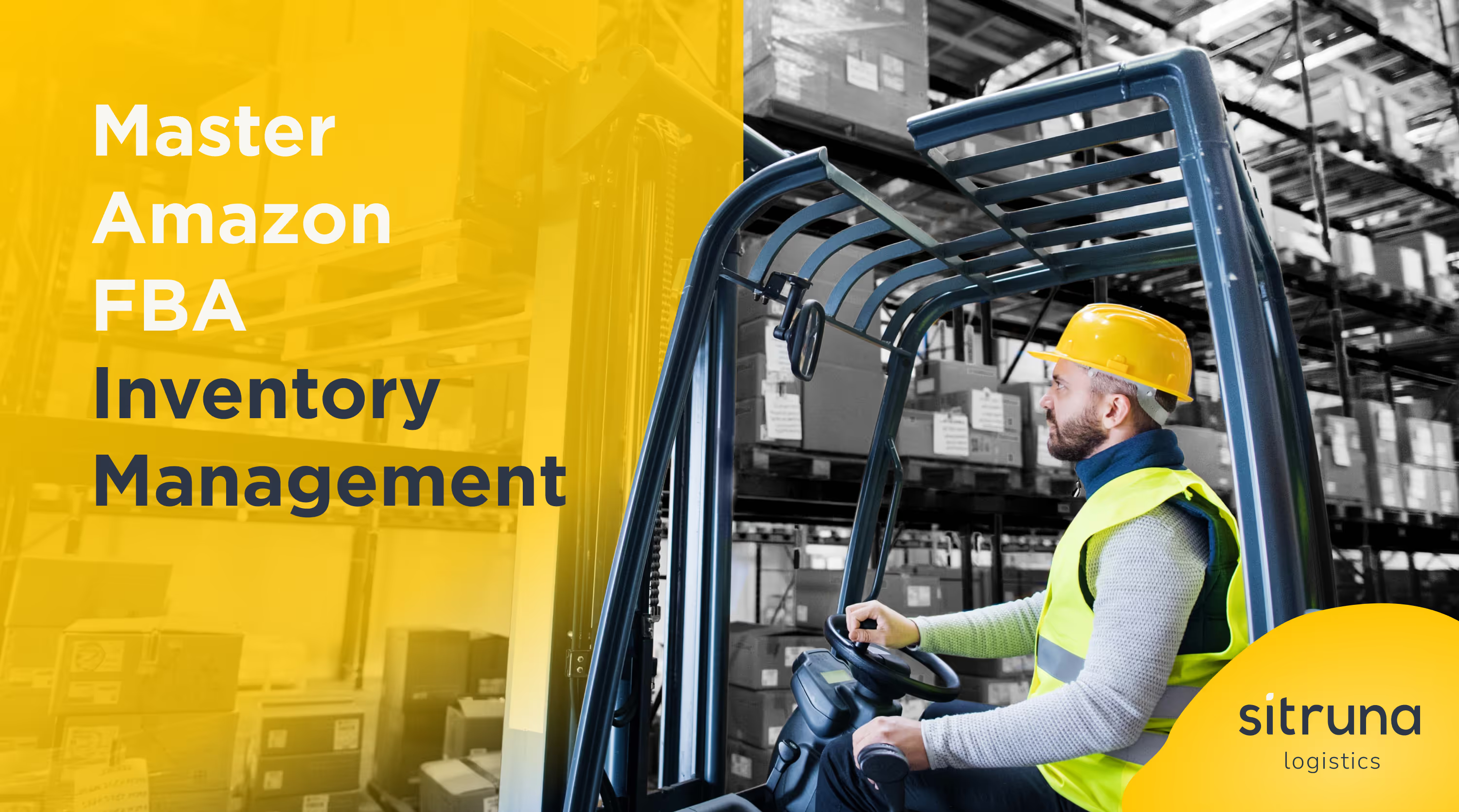Master Amazon FBA Inventory Management

In the bustling world of e-commerce, Amazon stands as a retail giant, connecting millions of sellers with a vast customer base. Success on this platform is not only about offering quality products at competitive prices but also hinges on a critical factor: staying in stock. Seems simple? Far from it. In this article, we delve into the strategies that can help sellers remain in stock with Amazon FBA and explore the importance of doing so.
Staying in Stock: What’s the Big Deal?
1. Maximising Sales Opportunities
The primary objective of any seller on Amazon is to make sales. A product out of stock is a missed opportunity, particularly during peak seasons and deal events that bring increased traffic and customer demand on Amazon. If you’re investing money into PPC campaigns, you will be effectively wasting ad spend as you successfully drive customers to a product listing they cannot purchase from. Customers looking for your product may turn to competitors if they find it unavailable, leading to potential revenue loss and hindering your business growth.
2. Gaining and Maintaining the Featured Offer (Buy Box)
The coveted Featured Offer, formerly known as the Buy Box, is a key element in Amazon's ecosystem. To be eligible for the Featured Offer, your product must be in stock. Winning the Featured Offer significantly boosts your chances of making sales, as most customers prefer the convenience of adding items directly to their cart with a single click.
3. Customer Satisfaction and Loyalty
Customers appreciate reliability. Consistently running out of stock can result in customer disappointment and frustration. Unhappy customers may leave negative reviews, which we all know can massively impact your seller rating, damaging brand loyalty and discoverability.
4. Building and Protecting Seller Reputation
Speaking of brand loyalty - Amazon rewards reliable and consistent sellers with better visibility and higher search rankings. A solid reputation as a seller who stays in stock contributes to improved search rankings, helping potential customers discover your products more easily, and valued customers return time and again.
5. Meeting Amazon Performance Metrics
We all know Amazon monitors performance metrics like the law - but there is a good reason behind this! Healthy performance metrics ensure a positive shopping experience for customers. Running out of stock can negatively impact these metrics, potentially leading to penalties or additional fees (the last thing you need!) Meeting Amazon's expectations for inventory management is vital for maintaining a healthy seller account, and avoiding the risk of reduced selling privileges.
6. Optimising Ad Campaigns
For brands running advertising campaigns on Amazon, having products consistently in stock is crucial. If customers click on an ad only to find that the product is unavailable, it not only wastes advertising budget but also diminishes the effectiveness of the campaign. Help your TACOS out - stay in stock!
Key Strategies for keeping in stock with Amazon FBA
1. Monitor Inventory Levels Regularly
Monitoring your inventory is the first step in effective inventory management, so that means regularly checking your inventory levels on the Amazon Seller Central dashboard. Make this super easy by setting inventory alerts to notify you when stock levels reach a certain threshold.
2. Sitruna App
Speaking of effectively managing your inventory, we have developed our very own extensive app dashboard. Not only does our app provide you with even more information than Seller Central, it also makes this data more accessible and easy to digest. All data is exportable into Excel or CSV, and each table can add additional metrics to see the data you want to see using the controls in the top right corner of every table or chart.

3. Utilise Amazon's Sales and Inventory Reports
Amazon provides sellers with various tools and reports (Re-stock Report & Business Report) to analyse sales velocity and gain insight into inventory performance. Use these reports to your advantage to identify your products’ demand patterns and slow-moving ASINs to adjust your inventory management strategy accordingly.
4. Forecast Demand Accurately
Use historical sales data to forecast demand for your products. Consider seasonality, promotions, and market trends when making predictions. Accurate demand forecasting helps you plan your inventory levels more effectively.
5. Proactivity Prevents Out of Stocks
Going back to the Sitruna App, it also helps sellers establish re-order triggers based on sales velocity and lead times to ensure that you initiate reorders before running out of stock.
What is a re-order trigger, you may ask? It is a predetermined inventory level that, when reached, prompts a seller to re-order more stock.
As for lead times, it refers to the amount of time it takes from placing an order with a supplier until the inventory is available for sale on Amazon. This includes production time, shipping duration, and any processing time at Amazon fulfilment centres.
For sales velocity, check out the snippet from our app below.

Maintaining clear communication and a strong relationship with your suppliers so they understand the importance of timely shipments to avoid stockouts also helps to optimise lead times for a more efficient supply chain.
6. Diversify Suppliers
Working with multiple suppliers reduces the risk of being out of stock due to unforeseen circumstances such as supplier issues, transportation delays, or other disruptions. Spreading your supplier base means you have a plan B ready to go should it be needed.
7. Enable Multi-Channel Fulfilment
Consider using Amazon's Multi-Channel Fulfilment service to fulfil orders from other sales channels. This helps balance inventory across different platforms and ensures that you are meeting demand from various sources.
8. Plan for Growth
Regularly re-assess your inventory management strategy as your business grows. Adjust your inventory levels to accommodate increased demand, and consider investing in systems or software that can help streamline the process as your product catalogue expands.
Conclusion
Mastering the art of staying in stock on Amazon holds a gravity of importance that cannot be overstated. Sales, customer satisfaction, and the overall success of your business on the platform are all influenced. By implementing effective inventory management strategies and staying proactive in monitoring and adjusting your stock levels, you position yourself for sustained growth and success in the competitive landscape of Amazon UK.
Hit the “let’s talk” button at the top of the page for expert help in effective stock management for your Amazon business, so that you never miss a sales opportunity again!



